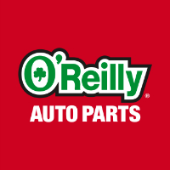-
Welcome to Auto Parts Forum
Whether you are a veteran automotive parts guru or just someone looking for some quick auto parts advice, register today and start a new topic in our forum. Registration is free and you can even sign up with social network platforms such as Facebook, X, and LinkedIn.
How To Replace the Throttle Position Sensor on a Jeep Cherokee
-
Similar Content
-
- 0 replies
- 34 views
-
- 0 replies
- 18 views
-
- 0 replies
- 19 views
-
- 0 replies
- 40 views
-
- 0 replies
- 20 views
-
-
Similar Topics
-
By NAPA
Chase Elliott and No. 9 Kelley Blue Book team qualified third for Sunday’s NASCAR Cup Series race at Phoenix Raceway The 28-year-old driver earned valuable stage points, finishing fifth in stage one and seventh in stage two A slew of cautions in the final stage prompted multiple strategies among teams. Elliott restarted 17th after the final caution of the race and ultimately finished the race in the 19th position Elliott and the No. 9 team leave Phoenix ninth in the Cup Series points standings After posting the seventh fastest lap in Friday afternoon’s NASCAR Cup Series practice session at Phoenix Raceway, Chase Elliott backed that up with a third-place qualifying lap on Saturday. The 28-year-old driver took the green flag for the 312-lap race from the second row on Sunday afternoon. Elliott was still running inside the top five when the first caution flag of the race waved on lap seven. The early report from the Hendrick Motorsports driver was that his No. 9 Kelley Blue Book Chevrolet Camaro ZL1 was locked down and tight in the back. With the team opting not to pit, Elliott restarted in the fifth position on lap 12 and remained there as the rest of 60-lap first stage went caution free. The fifth-place stage finish garnered six stage points for the Dawsonville, Georgia, native.
Under the stage-ending caution, Elliott relayed to crew chief Alan Gustafson that the Kelley Blue Book Chevy was tight and that it freed up as the run went on. The crew opted for four tires, fuel and a chassis adjustment during a fast pit stop which gained Elliott a spot on pit road. He lined up fourth to start the second stage on lap 69. Elliott raced three-wide once the field went back to green, taking over the third position on lap 70. He held strong, maintaining his top-three running position through a long green-flag run. The field started making green-flag pit stops on lap 115, with Elliott bringing the Kelley Blue Book Chevrolet to pit road on lap 117 for four tires and fuel. With the field stretched out, Elliott was bogged down in traffic following his stop, making it harder to gain track position. Still, he managed to score a top-10 finish in the second stage, taking the green-and-white checkered flag in the seventh spot. The result added four more stage points to his total.
During the stage break, Elliott brought the Kelley Blue Book Chevrolet to pit road for four tires and fuel. The pit crew knocked out another fast stop, gaining the 2020 Cup Series champion three spots. Elliott took the green flag for the final stage from the fourth position on lap 194 and was scored in fifth place when the caution came out just two laps later. Elliott kept his Chevrolet on the track under the yellow flag. He lined up fifth for the restart on lap 202 and was battling inside the top 10 when the race was slowed once more. Staying out while some drivers deeper in the field visited pit road, Elliott restarted eighth and was scored in ninth at the time of the lap-216 caution. Gustafson called Elliott to pit road with the rest of the leaders for four tires, fuel and a chassis adjustment. With varying pit strategies among teams – some taking only two tires and others opting to stay out – Elliott restarted in the 17th position on lap 220. He managed to advance as high as 16th early in the run but being stuck in dirty air made it difficult for Elliott to continue forward progress. When the checkered flag waved on lap 312, he was scored with a 19th-place finish.
Elliott and the No. 9 team leave Phoenix Raceway ninth in the Cup Series points standings, just 28 markers behind the leader.
Start / Finish: 3 / 19
Points Standing / Total: 9th / 123 pts. (-26)
Next Race: Sunday, March 17, Bristol Motor Speedway
How to Watch or Listen: 3:30 p.m. ET on FOX, PRN or SiriusXM
NAPA:
link hidden, please login to view
Chase Elliott: link hidden, please login to view
Hendrick Motorsports: link hidden, please login to view
No. 9 Team: link hidden, please login to view The post
link hidden, please login to view appeared first on link hidden, please login to view.
link hidden, please login to view -
By NAPA
Honestly,
link hidden, please login to view are rarely a topic of discussion around automotive maintenance until something goes wrong. A torn CV boot seems like a minor issue at first, but if the situation is not remedied quickly, more damage will occur. A CV boot keeps lubricating grease from escaping the spinning link hidden, please login to view. Without grease, the CV joint will wear out rapidly. CV boots also protect the CV joint from water, dirt and road debris. For an often-forgotten replacement part, the CV boot performs a pretty critical job. For even more technical insight, check out “ link hidden, please login to view” CV boots aren’t just for front-wheel-drive vehicles either. Any vehicle design that must transmit power to a wheel, while also allowing for suspension movement, might utilize a CV joint. For example, a late-model, rear-wheel-drive
link hidden, please login to view has an independent rear suspension and two CV axles, each with two CV boots. A late-model, front-wheel-drive link hidden, please login to view also has two CV axles and four CV boots. But, in comparison, an all-wheel-drive link hidden, please login to view has four CV axles and a total of eight CV boots. Is It Possible Fix a CV Boot?
If you’re searching for a how-to guide on replacing a damaged CV boot, you came to the right place. Let’s walk through a CV boot replacement with the help of some NAPA expertise. Keep in mind, a CV axle boot replacement is only for
link hidden, please login to view that are still in good shape. If your CV axle is clicking or the CV boot was damaged and leaking grease for an extended length of time, you need to replace the entire CV axle. Installing a new CV boot and applying
link hidden, please login to view won’t fix an already damaged CV joint. Also, the labor to just replace a CV boot is nearly the same or greater than replacing the entire CV axle assembly. If the link hidden, please login to view costs as much as a new or rebuilt CV axle, the smart choice is to replace the entire CV axle. How Long Does It Take to Replace a CV Boot?
The time it takes for CV axle boot replacement varies by vehicle. Most of the labor time involves removing the CV axle from the vehicle. Budget at least an hour for the job if the CV axle is easy to remove or up to three hours if the vehicle is complicated. Cleaning the CV joint can take another 30 minutes as well.
How to Replace a CV Boot
A typical
link hidden, please login to view includes a new CV boot, two CV boot clamps and grease. Replacing a CV boot requires lifting the vehicle off the ground for easier access to the underside. A repair shop or well-outfitted home mechanic will utilize a vehicle lift, while a DIYer can use something as simple as sturdy link hidden, please login to view. Never use a floor jack to support a vehicle, as they can suddenly fail. Lift the vehicle off the ground. Use a wheel chock to prevent any wheels on the ground from rolling. Remove the wheel on the axle that needs repaired. Refer to a repair manual for what steps to follow to access the CV axle. You will likely need to remove the brakes and detach steering and/or suspension components, as well as the axle nut. Remove the CV axle from the vehicle and place it on a workbench with plenty of working space. Cut off the failed rubber CV boot. The metal CV boot clamps will likely require a pair of link hidden, please login to view. Due to the potential mess caused by the CV joint grease, we recommend wearing a pair of disposable work gloves for this step. Refer to your repair manual for how to remove the CV joint from the axle shaft. Note that inner and outer CV joints are possibly different and might require distinct methods of disassembly. Clean the axle shaft to remove any old grease. Use a link hidden, please login to view to clean the CV joint. Let the CV joint dry thoroughly. If using non-split CV boot clamps, slide them over the axle shaft now. Slide the new CV boot onto the axle shaft, taking care to orient it correctly. The large cone opening should face the CV joint. You may need to use a small amount of silicone lubricant to help move the boot along the axle shaft. Refer to your repair manual to link hidden, please login to view using the correct specified grease. Refer to your repair manual to reinstall the CV joint onto the end of the axle shaft. Slide the CV boot over the CV joint, making sure it is seated evenly. Using the link hidden, please login to view, tighten both CV boot clamps. Reinstall the CV axle along with any components that were removed to access the CV axle. Pay attention to torque specifications during reassembly. Reinstall the wheel and tighten the lug nuts to the correct specifications. Lower the vehicle back to the ground. How Much Does It Cost to Replace a CV Boot?
CV boot replacement cost can range from $300 to $900 depending on the vehicle. It is wise to price out replacement of the entire CV axle as well. In some cases, it is smarter to spend a little more money to replace the entire CV axle rather than spend time changing just a CV boot. Check out the
link hidden, please login to view for a better estimate of what this repair would cost for your vehicle (if applicable). Now that you know the typical steps of how to replace a CV boot, you can decide if this repair is something you can tackle yourself. Your local NAPA Auto Parts store can help you find the right CV axle boot repair kit for your application. You can also shop NAPAonline for
link hidden, please login to view on more than 160,000 items! Don’t feel like doing it yourself or don’t have the time? The link hidden, please login to view at your local link hidden, please login to view have you covered with more than 17,000 locations nationwide. Photo courtesy of
link hidden, please login to view. The post
link hidden, please login to view appeared first on link hidden, please login to view.
link hidden, please login to view 
-
By celvampire
I found what looks to be an unused O2 sensor found in a thrift store, there are no marking anywhere on the part. Can anyone tell just by looking at it, what car/truck it might fit? Thank you.
-




Recommended Posts
Join the conversation
You can post now and register later. If you have an account, sign in now to post with your account.
Note: Your post will require moderator approval before it will be visible.